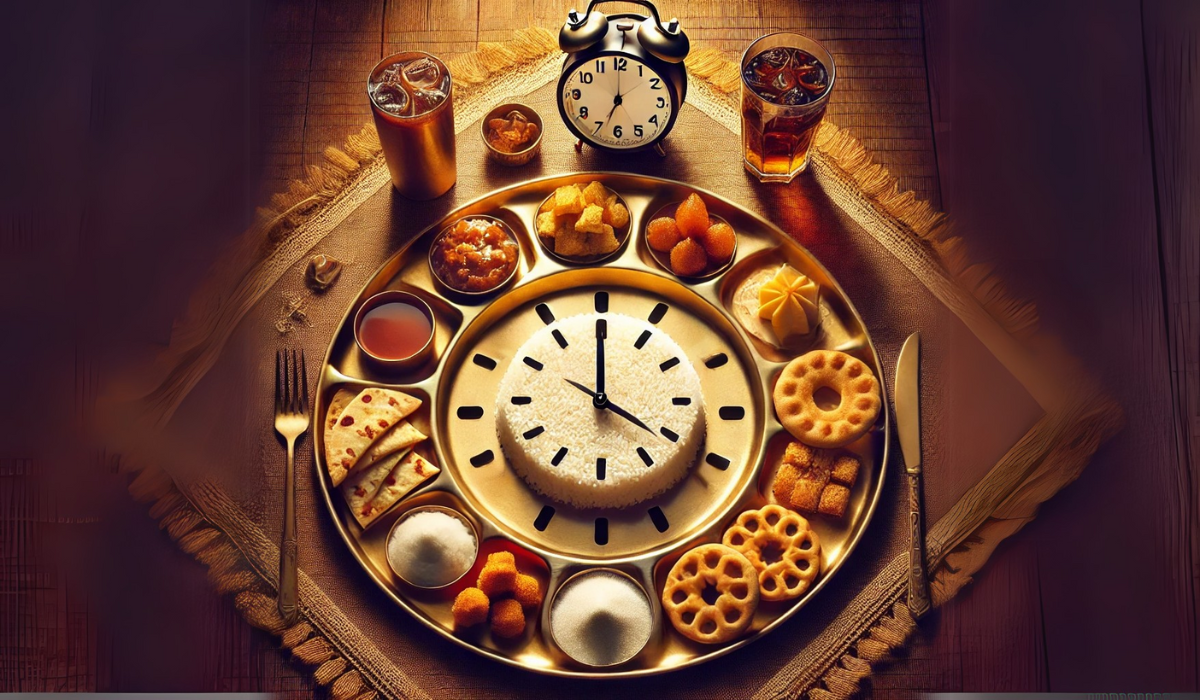The Silent Killer on Our Plates: How High-GI Foods Are Fueling India’s Health Crisis
A Story from Every Indian Household
It’s a warm afternoon in an Indian home.
A child rushes inside after a long play session, sweating and exhausted. “Mumma, I’m so thirsty!” he says, reaching for a glass of water.
His mother, wanting to give him something “healthy,” hands him a pack of fruit juice. “It has real fruit,” she reassures herself.
The child gulps it down in seconds—unaware that he just consumed the sugar equivalent of four tablespoons in a drink that was marketed as “natural” and “fortified with vitamins.”
Later in the evening, as he sits to do his homework, he starts feeling sluggish, irritable, and strangely hungry again. The quick sugar spike from the juice has already crashed, making his body crave more food.
This isn’t an isolated incident. It’s happening in millions of homes every single day.
We think we are making healthy choices, but in reality, we are unknowingly feeding our families a diet that is destroying their metabolic health.
The biggest culprit? High-Glycemic Index (GI) foods.
The Hidden Villain: Glycemic Index and the Sugar Rollercoaster
Not all carbohydrates are created equal. Some release sugar slowly and steadily, keeping energy levels stable. Others flood the bloodstream like a sugar tsunami, leading to a sudden high—followed by a hard crash.
This is where the Glycemic Index (GI) comes in—it measures how quickly a food raises blood sugar levels:
High GI (Above 70) – Causes a rapid blood sugar spike and crash, leading to hunger and cravings.
Examples: White bread, biscuits, instant cereals, packaged fruit juices, potatoes.
Medium GI (56-69) – Causes a moderate rise in blood sugar.
Examples: Brown rice, whole wheat roti, sweet corn, mangoes.
Low GI (Below 55) – Releases sugar slowly, providing steady energy.
Examples: Whole dals, rajma, bajra, millets, nuts, and fibrous vegetables.
Now, here’s the shocking truth—many of the foods we eat daily have extremely high GI, pushing us towards insulin resistance, weight gain, and chronic diseases.
- White bread (GI 74-80) – A common breakfast choice, but worse than sugar.
- Packaged fruit juices (GI 75+) – Stripped of fiber, loaded with sugar.
- Potatoes (GI 83-90) – Found in aloo parathas, samosas, and snacks.
- Maida-based foods (GI 85+) – Naan, pav, biscuits, and processed snacks cause sugar spikes.
- Breakfast cereals (GI 80+) – Marketed as “healthy” but worse than desserts.
While whole grains like rice and wheat are not the enemy, the problem lies in how we consume them.
Eating white rice in excess without fiber or protein, consuming refined flour (maida) products daily, and snacking on processed foods have turned our traditional meals into a sugar bomb.
Why Are Indians More at Risk?
A Genetic Time Bomb – Indians have a higher tendency for insulin resistance, making us more vulnerable to diabetes.
The Shift to Processed Foods – Traditional, balanced meals have been replaced by instant, refined, and sugary foods.
Carbs Without Balance – Traditional meals paired rice with dals, ghee, and fiber-rich vegetables. Today, our meals are carb-heavy and low in protein, fiber, and healthy fats.
Marketing Lies – Brown bread, atta noodles, and packaged “multigrain” products sound healthy but still have a high GI.
Rising Gestational Diabetes – More pregnant women are diagnosed with high blood sugar, passing insulin resistance to their babies, increasing their risk of Type 2 diabetes.
If we don’t act now, by 2045, India will have 134 million diabetics—a number so large it could break our healthcare system.
The Metabolic Chaos: How High-GI Foods Wreck Your Body
High-GI foods don’t just spike blood sugar. They create a chain reaction that damages multiple organs over time.
🔥 Insulin Resistance & Sugar Crashes – Your body struggles to process sugar, leading to frequent hunger pangs and cravings.
🔥 Hormonal Imbalances – High-GI foods disrupt leptin, the hormone that controls hunger, making you eat more than necessary.
🔥 Belly Fat & Fatty Liver – Excess sugar is stored as fat in the liver and belly, leading to non-alcoholic fatty liver disease (NAFLD).
🔥 Heart Disease & High Cholesterol – Constant sugar spikes damage arteries, increasing the risk of heart attacks and strokes.
🔥 PCOS, Infertility & Hormonal Disorders – Women with PCOS often have insulin resistance, worsened by high-GI diets.
🔥 Brain Fog & Mood Swings – Sugar highs and crashes affect the brain, making you feel tired, irritable, and unfocused.
How to Lower GI in Your Diet (Without Giving Up Traditional Foods)
The solution isn’t eliminating carbs—it’s about eating them smarter.
✅ Pair Carbs with Protein & Fiber – Eat rice with dal, vegetables, ghee, or paneer to slow sugar absorption.
✅ Choose Whole Grains – Swap maida for jowar, bajra, and ragi.
✅ Prioritize Fiber – Include leafy greens, nuts, seeds, and whole dals in every meal.
✅ Limit Processed Snacks – Choose makhanas, chana, and nuts over biscuits and namkeens.
✅ Avoid Sugary Drinks – Drink coconut water or herbal teas instead of fruit juices and colas.
✅ Eat Balanced, Traditional Meals – Dal, ghee, vegetables, and whole grains—the way our ancestors ate!
The Final Warning: It’s Now or Never
We are normalizing diabetes, obesity, and hormonal disorders in India.
We blame genetics, but the truth is, it’s our lifestyle and food choices that are making us sick.
This is preventable.
This is reversible.
This is in your hands.



